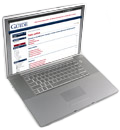Maryland Halves Latest Rate Request from Pepco

Less than a year after granting an electric utility a rate increase of more than $50 million, the Maryland Public Service Commission has awarded the utility, Potomac Electric Power Company (Pepco), another $33.9 million in rate relief. However, just as had been the case in last year’s rate proceeding, the amount actually authorized pales in comparison to the amount sought.
In the instant case, Pepco had asked for $68.6 million in additional revenues, meaning that the approved increase represents only about half of what had been requested. In last year’s case, decided in November of 2016, the company’s original application listed a need for a rate hike of $126.8 million, although the commission allowed only $52.5 million, or about 41% of that amount. Many of the issues litigated in the 2016 proceeding were resurrected in the 2017 docket, including rate of return on equity (ROE), system reliability investments, incentive compensation packages, and advanced metering infrastructure (AMI) costs.
As to the utility’s cost of capital, the commission echoed many of its conclusions from the 2016 case. That is, while acknowledging that the company’s recommended ROE of 10.1% was lower this time around than the 10.6% ROE it had proposed in 2016, the commission ruled that Pepco was still overstating its ROE. The commission reminded the utility that the 2016 rate order had actually reduced the company’s ROE from its previously authorized 9.62% to 9.55%. In reviewing Pepco’s latest rate petition, the commission deemed the company’s financial circumstances little changed. In fact, the commission found, far from supporting an increase in the utility’s ROE, the record showed that the utility’s ROE should be reduced yet again, to just 9.5%.
The commission explained that Pepco had developed a pattern of seeking ROEs well above going market rates. According to the commission, the utility has long advocated for ROE values that were both unrealistic and out of line with current economic conditions. Moreover, the commission said, Pepco’s ROE proposals were not reflective of the company’s actual risk profile. Underscoring that point, the commission noted that Pepco has the advantage of operating in a nearmonopoly environment, which obviously mitigates its risk.
Plus, the commission commented, the utility’s service territory remains among the state’s most economically stable and secure. In addition, the commission observed that simply by virtue of Pepco’s acquisition by Exelon Corporation two years ago, the utility now has an easier path for accessing capital at reasonable rates. And, the commission stated, today’s capital markets are characterized by historically low interest rates, which signals that the company has no pressing need for a higher ROE.
Upon reviewing the results of various ROE cost models presented in the case, the commission came to the conclusion that a ROE no greater than 9.5% was justified. As to system reliability, the commission commended the company for making great strides in its performance metrics. The commission reported that the frequency of power outages in the utility’s service area had decreased by 22% between 2012 and 2016, while Pepco saw a 35% improvement in the duration of such outages during the same time frame.
The commission applauded the company for its continued commitment to system strengthening and improvements, noting that during that fouryear time period, Pepco had expended more than $908 million on reliability programs and measures. Such progress notwithstanding, the commission said it was disappointed to discover that Pepco had been unable to fully comply with one of the service reliability benchmarks that had been included as a condition of approval of its merger with Exelon in 2015. More particularly, the commission averred that the company had not achieved the system average interruption frequency index (SAIFI) goal of 1.05 for 2016 that had been set forth in the commission’s merger decision as a condition of approval.
The commission related that Pepco had managed a 1.13 SAIFI level for 2015 but then recorded a SAIFI of 1.08 for 2016. Although admitting that the utility had missed the 2016 SAIFI target by the slimmest of margins (just 0.03), the commission nevertheless concurred with other parties that some disallowance was necessary due to Pepco’s nonattainment of that standard. Given that Pepco had gotten only about 62% of the way toward the 2016 benchmark vis-à-vis the 2015 goal, the commission deemed it appropriate to eliminate a proportionate amount from the utility’s claimed expense for an employee incentive program that rewards higher-level personnel for achieving service reliability goals. The commission thus removed from rates a little more than $1.1 million out of the $1.8 million proposed by Pepco.
Finally, with regard to AMI, the commission dismissed arguments from two intervenors that the method adopted in the utility’s 2016 rate case for allocating AMI program costs should be reexamined. In that earlier proceeding, the commission had agreed with its staff that a “hybrid” of customer, demand, and energy factors should be used when assigning AMI equipment costs among the various customer classes. Although abiding by that hybrid directive, Pepco in the end had designated its smart meter costs as largely customer-related, such that they were treated as fixed costs to be recovered through the customer charge.
In challenging that outcome, the two parties pointed out that one of the objectives behind the AMI rollout was to augment Pepco’s ability to engage in load shaping and promote conservation programs and goals. They thus maintained that the company’s AMI costs should be categorized as both customer-related and demand-related. But the commission found that the utility had shown a proper weighting of the customer, demand, and energy elements as dictated by the hybrid cost allocation model the commission had approved.
That the hybrid approach ultimately resulted in costs being apportioned primarily as customer-related did not mean that the company had misapplied the model, the commission said. The commission added that the opposing parties had presented no evidence indicating exactly what portions of Pepco’s AMI costs were demand-related or relevant to serving area load versus individual load. It therefore accepted the utility’s reasoning on treating AMI costs as fixed costs that are recoverable through monthly customer charges. Re Potomac Electric Power Co., Case No. 9443, Order No. 88432, Oct. 20, 2017 (Md.P.S.C.).



